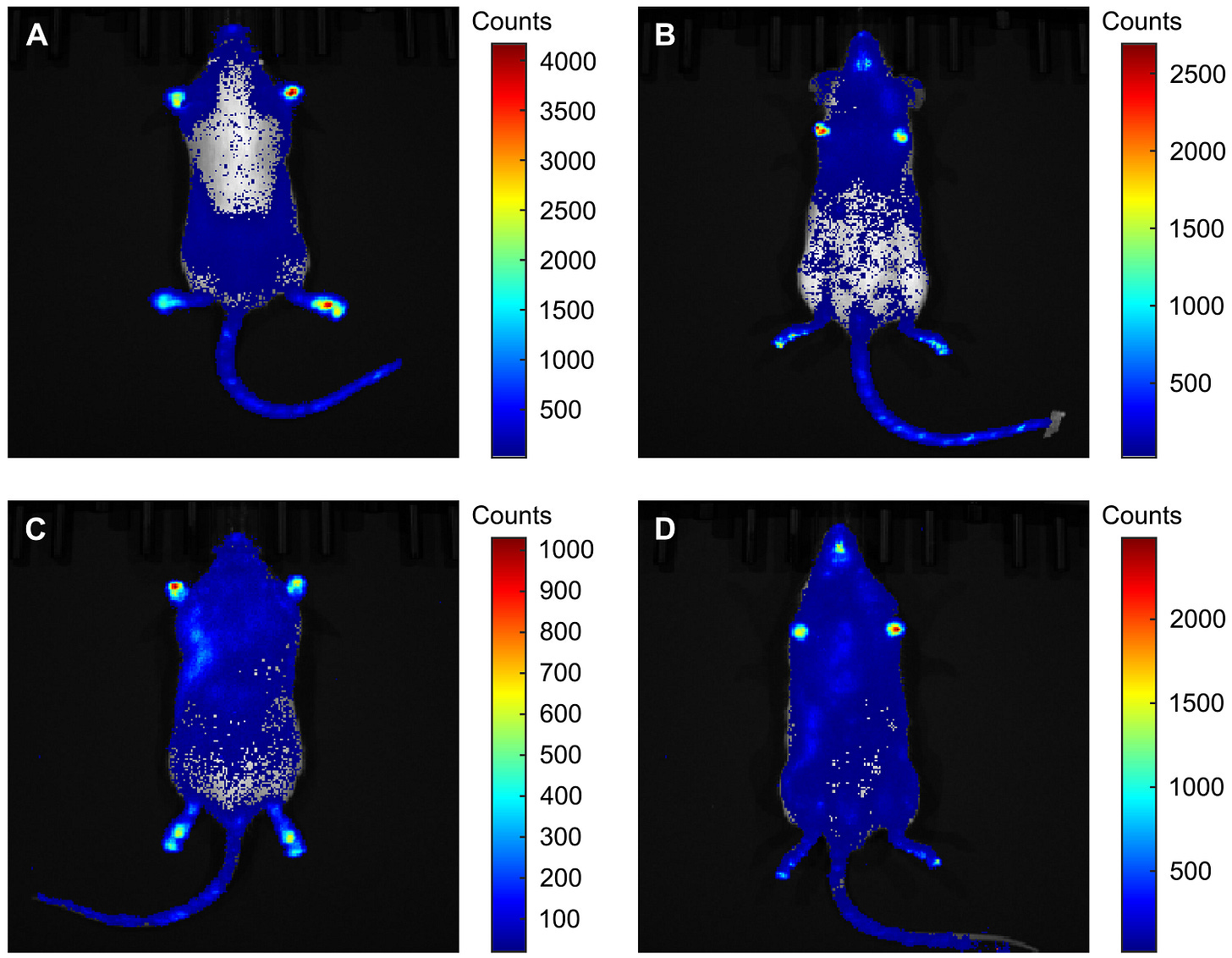I’m hosting an Asimov Press “Biology Trivia” night on July 23 in San Francisco. Join us! RSVP here.
You can track cellular gene expression patterns, using ultrasound, from outside the body. (The technology is built on gas vesicles, which I’ve written about before.) If you had said this would be a thing 10 years ago, nobody would have believed you.
“…an autobioluminescent transgenic mouse line constitutively expressing the genes of the bacterial bioluminescence system…”
Whole-genome sequencing of microbes floating in the air. (Fun fact: Microbes travel all the way from the Sahara Desert to New York by riding motes of sand into the atmosphere.)
A toolkit to program multicellular behaviors in Baker’s yeasts. Congrats to Fankang Meng and the rest of the Ellis lab!
Rational design of tunable, fluorescent DNA aptamers. The researchers used them to build “responsive nanostructures that light up upon activation.”
Sixteen new cytosine base editors, which outperform existing base editors 81.5 percent of the time.
$30,000 in cash prizes for teams that can design the best PETase enzymes.
Lab-grown sperm and eggs are likely a few years away. I’d wager this will be true within 3 years. Subscribe to the De Novo blog for more.
Engineered microbes make lutein—which is currently extracted from marigold flowers—at a titer of 1.78 grams per liter.
Cryo-EM structures of the measles virus polymerase; important step toward new therapeutics.
Chai-2 is “a multimodal generative model that achieves a 16% hit rate in fully de novo antibody design.”
Scientists uncover lost tomb of Te K’ab Chaak, who founded the Mayan city of Caracol about 1,700 years ago.
NIH director, Jay Bhattacharya, is replacing his external advisory board.
A new method can eliminate multiple chrosomes inside of yeast cells, thus making them haploid.
A paper was retracted from the journal Current Psychology because its authors “collected posts from the Reddit subforum r/schizophrenia.” The authors anonymized the data, but the journal said they need informed consent to study people on the Internet. Strange.
Inserting >1 million bases of human DNA into mouse embryos to study epigenetic patterns.
Using optogenetics to screen 370,830 chemicals for their effects on a cell’s stress response pathway.
A multi-adjuvant neoantigen vaccine for melanoma.
A single-cell multi-omics atlas of rice. Super important, considering rice is the main source of food for more than half of people on Earth.
The Walking Egg project is basically a bus with a simplified IVF clinic inside. It’s driving around South Africa to help couples get pregnant. Cool.
SciArena ranks 23 LLMs based on their accuracy answering science questions.
Organoids grown in the lab now have vessels to transport blood and nutrients.
Researchers tracked how 214 diseases spread across Europe and Asia over the past 37,000 years by sequencing 1,313 ancient humans. Study in Nature. Coverage in The New York Times.
BioEmu is a deep learning model for emulating protein equilibrium ensembles that also incorporates “over 200 milliseconds of molecular dynamics (MD) simulations, static structures and experimental protein stabilities.”
And AiCE is an inverse folding model that was used to design new base editors.
The Coli Toolkit is a modular, Golden Gate-based cloning system adapted from the Yeast Toolkit, but for E. coli.
“Memories without brains.” A nice article on the wonders of slime molds.
A model for IVF “trained on…18 million time-lapse embryo images.”
New molecular recorders to link kinase activities to cell phenotypes.
Coartmen is the first malaria medicine approved for newborns and young infants by Swissmedic. “Until now, there has been no approved malaria treatment for infants weighing less than 4.5 kilograms, leaving a treatment gap. They have instead been treated with formulations intended for use in older children, which may increase the risk of overdose and toxicity. Malaria vaccines are also not approved for the youngest babies.”
These wireless devices can be controlled from outside the body to release peptide or hormone-based drugs.
This link roundup was sponsored by Rostra.ai.


